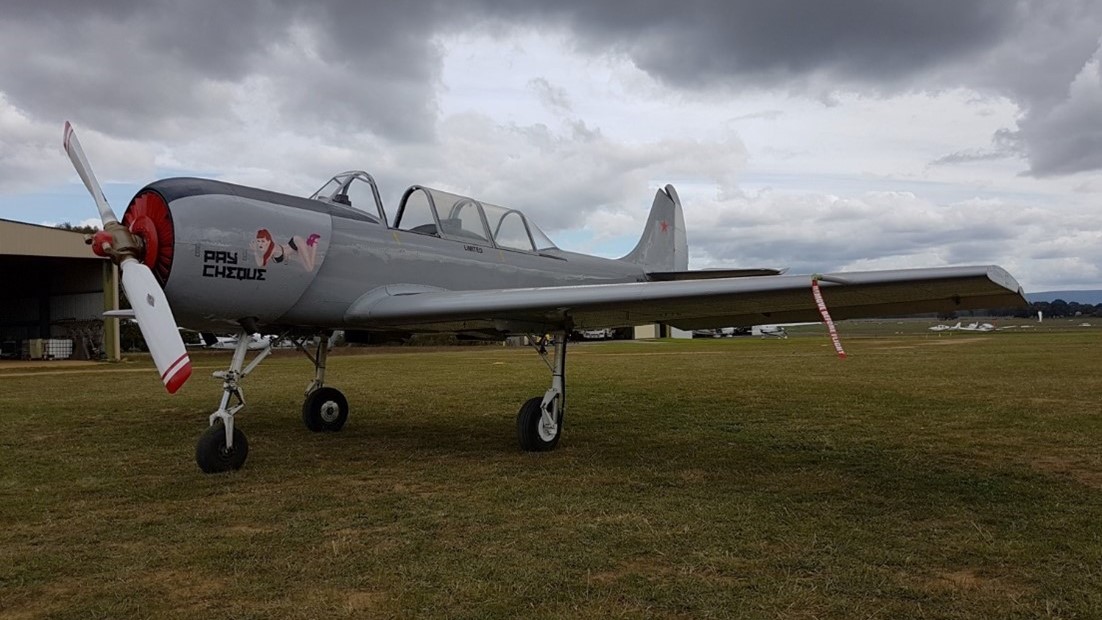
|
Key points:
|
A Yak-52 warbird aircraft had been conducting low-level aerobatics at a height of less than 500 ft above the ground before it collided with water at high speed, fatally injuring the pilot and passenger, an Australian Transport Safety Bureau investigation report details.
The two-seat Yak-52, an ex-military trainer aircraft, departed Southport Airport, on Queensland’s Gold Coast, on the morning of 5 June 2019 for a private aerobatic flight expected to last about 30 minutes. The pilot had owned the aircraft since 2018, and held an endorsement to conduct aerobatics at no less than 3,000 ft above ground level.
When the aircraft did not return to Southport as planned, a search and rescue operation commenced, with part of the aircraft’s propeller located on South Stradbroke Island later that afternoon. The pilot and passenger, who had sustained fatal injuries, and additional wreckage, were recovered from the waters near Jumpinpin channel in the following days.
“The ATSB’s investigation established that prior to the accident the pilot had conducted a number of aerobatic manoeuvres below 500 ft above ground level,” ATSB Director Transport Safety Dr Stuart Godley said.
“While the absence of recorded data for the last phase of flight or witnesses to the accident meant we could not determine with certainty that the pilot was conducting an aerobatic manoeuvre immediately prior to the aircraft’s impact with the water, the ATSB considered it a possibility.”
Dr Godley said the ATSB was able to build a detailed understanding of much of the accident flight, including from air traffic control surveillance radar, which recorded an aircraft over South Stradbroke Island conducting operations with significant track and speed fluctuations, consistent with aerobatic manoeuvres, and witness reports.
Witnesses on South Stradbroke Island reported that they observed an aircraft consistent with the accident aircraft conduct a “loop, cut right, and dive below the tree line”.
“During the accident flight and previous flights, the pilot conducted low-level aerobatics without having completed the required training or having the appropriate endorsement to do so,” noted Dr Godley.
“This would have potentially limited the pilot’s appreciation of the inherent risks associated with low-level aerobatics.”
Dr Godley noted that research shows that pilot perceptions of risk may decrease with repeated successful outcomes, and if a pilot has a history of flights without incident, then they may perceive that they have a lower likelihood of an adverse outcome based on their prior incident-free experiences.
“This accident highlights the inherent risks associated with performing low-level aerobatics where there is a reduced safety margin for recovery,” Dr Godley said.
“Even more so, it demonstrates the importance of being suitably-trained and qualified to conduct these operations.”
The investigation noted that people with aviation experience and knowledge had witnessed the pilot undertake previous low-level aerobatic flights.
While there had been some attempts to communicate concerns about risk-taking behaviour to the pilot, the investigation did not find evidence that the pilot’s behaviour had been formally reported.
“We encourage witnesses, particularly those within the aviation industry, to report any concerns regarding unsafe behaviours through mechanisms such as confidential reporting systems, such as the ATSB’s own REPCON, or the Civil Aviation Safety Authority’s online reporting portal,” Dr Godley said.
“Confidential reporting provides a means to escalate concerns about pilot behaviour while providing protections for the source of the report.”
Dr Godley also noted that the investigation found a pre-existing fatigue crack in the aircraft’s elevator bellcrank, which had the potential to fail in-flight, leading to a loss of control.
Although this crack did not contribute to the accident flight, the finding prompted the ATSB in November 2020 to issue a safety advisory notice to Yak-52 maintainers and owners, emphasisng the importance of dye penetrant inspections to remove defective elevator bellcranks from service.
Read the report: Collision with water involving Yakovlev Aircraft Factories Yak 52, VH-PAE, near South Stradbroke Island, Queensland, on 5 June 2019


